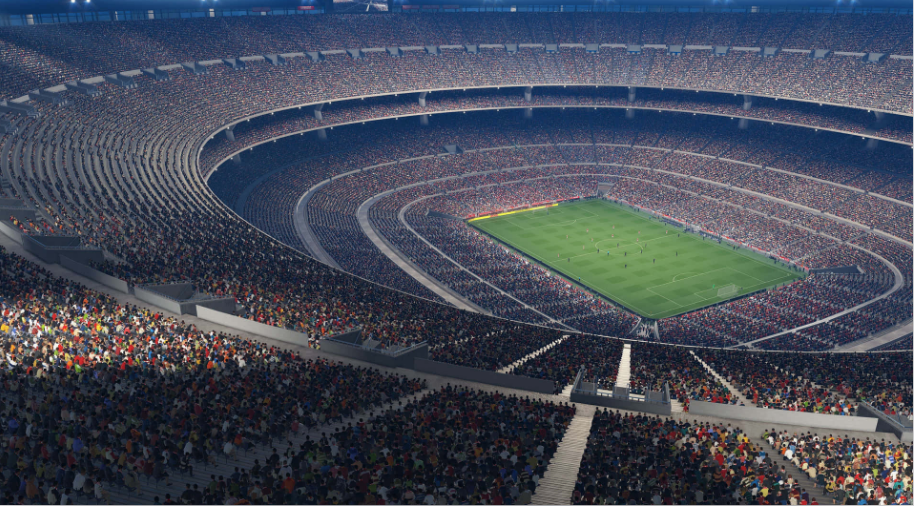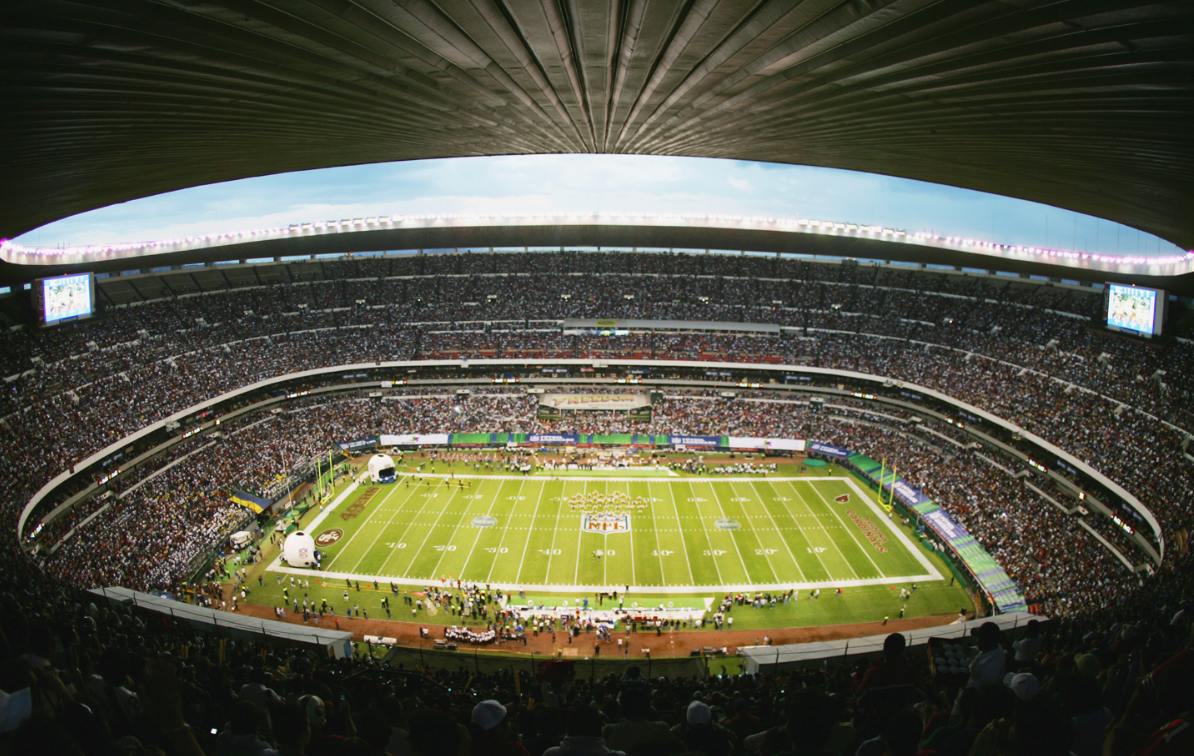A soccer field is typically around 64,000 square feet. The exact dimensions can vary slightly. Soccer fields are usually around 64,000 square feet in size, although the exact measurements may vary slightly. This standard size accommodates the regulations set by FIFA, the governing body of world soccer. The field’s size and dimensions play a crucial role in the game, affecting the players’ strategies and the overall flow of the match.
Whether it’s a professional game or a casual kickabout with friends, the soccer field’s dimensions are an essential aspect of the sport. Understanding the size of a soccer field is fundamental for players, coaches, and fans alike, as it directly impacts the dynamics and tactics employed during a game.
How Many Square Feet is a Soccer Field

Dimensions of A Soccer Field
A soccer field typically covers about 57,600 square feet, with dimensions of 100-130 yards in length and 50-100 yards in width. The size may vary based on regulations or the level of play.
Standard Measurements: A soccer field size in feet is typically around 120 to 150 yards in length and 70 to 80 yards in width, equivalent to 108,000 to 120,000 square feet. For soccer field size in meters, this translates to approximately 110 to 140 meters in length and 64 to 75 meters in width.
Variations In Size: How Many Square Feet is a Soccer Field
- International Matches: FIFA regulations stipulate a standard soccer field size of 110 to 120 meters in length and 64 to 75 meters in width.
- Smaller Fields: Mini soccer fields can range from 50 x 82 feet to 70 x 110 feet, providing a playing area of approximately 4,100 to 9,000 square feet.
- Indoor Soccer: Indoor soccer fields typically have dimensions of 50 x 82 feet, offering around 4,100 square feet of playing space.
Calculation of Square Feet
Calculation of Square Feet: Soccer fields vary in size depending on the level of play, but the standard dimensions for a full-size soccer field are crucial to understanding the calculation of square feet.
Area Calculation
The area of a soccer field is calculated by multiplying the length by the width. For a standard full-size soccer field, the length is approximately 100-130 yards, and the width is around 50-100 yards.
| Field Size | Length (yards) | Width (yards) | Total Area (square feet) |
|---|---|---|---|
| Standard Full-Size | 100-130 | 50-100 | 5,000 – 13,000 |
Comparison To Other Sports Fields
- A soccer field is larger than a basketball court, which typically measures around 94 x 50 feet.
- Compared to a football field, which is 360 feet x 160 feet, a soccer field is smaller in size.
- When it comes to a baseball field, which varies in size, a soccer field usually covers a larger area.
Practical Implications
A soccer field size in meters has significant practical implications for various aspects of the game. Understanding how many square feet a soccer field in feet is crucial for maintenance, player performance, and overall gameplay.
Maintenance Considerations
- Regularly measuring the soccer field ensures proper upkeep.
- Knowing the exact size of square feet aids in efficient maintenance planning.
- Maintenance tasks such as mowing, line marking, and turf care are influenced by the field’s dimensions.
Impact On Player Performance
- The size of the soccer field directly affects player endurance and tactics.
- Players’ movement and positioning are influenced by the field’s square footage.
- Smaller fields may lead to quicker gameplay and more intense physical demands on players.
Global Variances
Soccer fields vary in size across different countries due to international standards and cultural influences.
Differences In International Standards
The dimensions of soccer fields are not standardized globally, leading to variations in square footage. The International Football Association Board (IFAB) provides guidelines, but individual football associations and leagues may have their regulations, resulting in diverse field sizes.
Cultural Influences on Field Size
Cultural preferences and playing styles influence the size of soccer fields. For example, South American countries tend to have smaller fields, promoting skillful dribbling and close ball control, while European nations may favor larger fields for a more strategic and expansive style of play.

Historical Evolution
The historical evolution of how many square feet is a soccer field has seen significant changes over time, influenced by rule modifications and the evolving nature of the sport. Understanding the historical perspective provides valuable insights into the dimensions and size of soccer fields, shaping the game as we know it today.
Changes Over Time
Over the years, the dimensions of soccer fields have undergone several changes, reflecting the sport’s adaptation to varying playing styles and strategies. These changes have influenced the overall size of soccer fields, impacting the playing area and the dynamics of the game itself.
Influence Of Rule Modifications
Rule modifications in soccer have played a pivotal role in determining the dimensions of the playing field. From the introduction of standardized measurements to adjustments in field size based on different age groups and competitive levels, rule modifications have directly influenced the square footage of soccer fields.
Future Trends
Adaptations In Response To Technological Advancements
As technology continues to advance, soccer fields are also expected to change to enhance the overall game experience. These adaptations may include the integration of artificial intelligence to monitor player performance, virtual reality for immersive training sessions, and smart turf with sensors for real-time data analysis.
Environmental Concerns
With a growing focus on sustainability, the future of soccer fields may see an increased emphasis on eco-friendly materials for construction and maintenance. This could involve the use of recycled or renewable resources, as well as energy-efficient lighting solutions to minimize environmental impact.
Comparative Analysis
Soccer fields are known for their vast expanse, but how do they compare to
other sports fields, and what non-sporting uses can be found for these
spacious areas? Let’s delve into a comparative analysis to understand the
dimensions and potential applications of soccer fields.
Comparison With Other Sports Fields
When considering the size of a soccer field, it’s interesting to compare
it with other sports fields. A standard soccer field typically measures
100-130 yards in length and 50-100 yards in width, totaling approximately
1.32 to 2.47 acres. In comparison, a football field, including the end
zones, spans 1.32 acres, while a rugby field is slightly larger at around
1.76 acres. On the other hand, a hockey rink covers about 0.8 acres. Soccer fields are among the largest sports fields, offering
a substantial playing area for athletes.

Utilization In Non-sporting Contexts
The expansive nature of soccer fields extends beyond sports, finding
diverse applications in non-sporting contexts. These fields are commonly
utilized for hosting outdoor events such as concerts, festivals, and
community gatherings due to their ample space and accessibility. Moreover,
in urban planning, large open areas like soccer fields serve as valuable
green spaces for recreational activities, promoting physical well-being
and social interaction within communities. Additionally, soccer fields
can be repurposed for temporary facilities during emergencies or
disaster-relief efforts, showcasing their versatility and adaptability
beyond sports.
Conclusion
To sum up, a soccer field is typically between 50-100 yards wide and 100-130 yards long, which translates to 5,000 to 13,000 square yards or 45,000 to 117,000 square feet. The exact size may vary depending on the level of play, with professional fields being larger than those used by youth leagues. Knowing the dimensions of a soccer field is essential for anyone involved in the sport, whether as a player, coach, or fan. So, keep these numbers in mind and enjoy the beautiful game!




